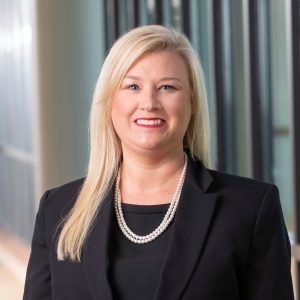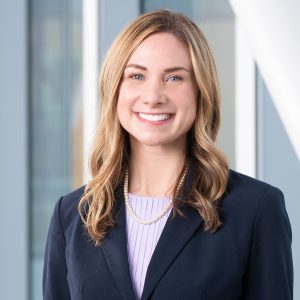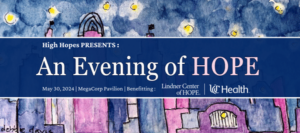

By Jennifer B. Wilcox Berman, PsyD, Lindner Center of HOPE
OCD and OCPD are often mistaken for one another or used interchangeably. Although there is some overlap between the two disorders, it’s important to distinguish between them because they are quite different in many ways. It is important to note that although there are differences, some people may have symptoms of both OCD and OCPD. The two disorders are differentiated below.
Obsessive-Compulsive Disorder (OCD) is a debilitating psychiatric disorder that presents in many forms. OCD is comprised of obsessions, which are persistent and unwanted intrusive thoughts, images, or urges. To reduce or eliminate this distress or discomfort, OCD sufferers begin to engage in compulsive behavior, which is ritualized behavior or mental acts, that serve to reduce their discomfort and anxiety. It should be noted that not all compulsions are outwardly observable and may include avoidance of triggers or engaging in mental compulsions. Unfortunately, engaging in compulsions or avoidance of triggers reinforces obsessive thinking. Therefore, the goal of treatment is to reduce compulsions while learning how to tolerate the distress that comes from intrusive thoughts. Some subtypes of OCD include fears related to contamination, scrupulosity (religious-based fears)/morality, fear of harming others (aggressive or sexual), ordering and arranging, repeating, and checking. There are several other subtypes of OCD not noted here. In OCD, these intrusive thoughts are considered ego-dystonic, meaning they are inconsistent with someone’s self-image, beliefs, and values. Therefore, these obsessions cause significant distress, anxiety, and worry and can greatly interfere with one’s life. People with OCD tend to seek help when these thoughts and behaviors cause problems in their life.
According to the Diagnostic and Statistical Manual of Mental Disorders (5th edition), Obsessive-Compulsive Personality Disorder (OCPD) is “a pervasive pattern of preoccupation with orderliness, perfectionism, and mental and interpersonal control.” Due to this, people with OCPD struggle with flexibility, openness to new ideas, and are often inefficient at completing tasks due to perfectionism. Their rigidity and inflexibility can lead to preoccupation with details, rules, lists, order, organization, and schedules. They can hold themselves to perfectionistic standards that interfere with their ability to complete tasks. They are often overly devoted to work and productivity at the expense of leisure activities and interpersonal relationships, leading to a poor work-life balance. People with OCPD can be overly conscientious, very scrupulous, and are often inflexible about matters of ethics, morality, and personal values. Some people with OCPD tend to be miserly, may hoard money for the future, and may have difficulty discarding worn-out or useless items. They may appear to be stubborn or rigid, and may struggle to delegate tasks or work with others because they don’t believe others will do things to their high standards. OCPD is considered ego-syntonic, meaning that it is consistent with someone’s self-image, beliefs, and values. People with OCPD tend to feel validated in their patterns of rigidity and perfectionistic rules and schedules. Therefore, people with OCPD are less likely to seek treatment, unless their behavior begins to negatively impact those around them.
While Exposure and Response Prevention (ERP) is considered the “gold standard” treatment for OCD, there is no such definitive standard intervention for OCD. Exposure and Response Prevention (ERP) is a type of Cognitive-Behavior Therapy (CBT). Cognitive-Behavior Therapy varies from other types of talk therapy in that it is focused on changing thinking patterns and behaviors. It tends to be directed at the present, rather than the past and is goal-oriented and solution-focused. ERP aims to change behavioral patterns, allowing someone to confront their fears and therefore, reduce their OCD symptoms. Exposure refers to the direct confrontation of one’s fear through voluntarily taking steps towards their fears and triggers. Response Prevention refers to someone voluntarily agreeing to reduce their usual rituals and compulsions. It is very important for someone who is working on doing exposures to simultaneously refrain from engaging in compulsions. Without reducing or refraining from the related compulsions, the person cannot learn that they can tolerate the exposure or that the compulsion is unnecessary.
Treatment for OCPD tends to focus on the identification of rigid rules and lifestyle and how these things may be negatively impacting one’s life. Therapeutic intervention includes working on flexibility, willingness to make changes, and focusing on one’s values as motivation for change.
For those suffering from symptoms of OCD or OCPD, therapeutic intervention can be helpful. It is important to seek a specialized provider that can accurately diagnose and treat these disorders.
References:
American Psychiatric Association. (2013). Diagnostic and statistical manual of mental disorders (5th ed.).
Grant, J. E., Pinto, A., & Chamberlain, S. R., (Eds.) (2020). Obsessive compulsive personality disorder. American Psychiatric Association Publishing.
Hyman, B. M., & Pedrick, C. (2010). The OCD workbook: Your guide to breaking free from obsessive-compulsive disorder (3rd ed.). New Harbinger.









